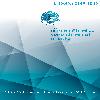Antrenmanlı Sporcularda Çeviklik ve Ağırlıklı Squat Sıçrama Egzersizi Esnasındaki Hız ve Güç Değerleri Arasındaki İlişki
Çeviklik, Squat Sıçrama, Hız, Güç
The Relationship Between Velocity and Power Values During Loaded-Squat Jump Exercise and Agility in Trained Athletes
Agility, Squat Jump, Velocity, Power,
___
- Baker, D., Nance, S., & Moore, M. (2001). The load that maximizes the average mechanical power output during jump squats in power-trained athletes. Journal of Strength and Conditioning Research, 15(1), 92-97.
- Bartlett, R. (2007). Introduction to sports biomechanics: Analysing human movement patterns (2nd edition). Oxon: Routledge.
- Cormie, P., McCaulley, G.O., Triplett, N.T., & McBride, J.M. (2007). Optimal loadig for maximal power output during lower body resistance exercises, Medicine and Science in Sports and Exercise, 39(2): 340-349.
- Cronin, J.B., & Sleivert, G. (2005). Challenges in understanding the influence of maximal power training on improving athletic Performance. Sports Medicine, 35(3), 213-234.
- Gambetta, V. (1996). How to develop sport specific speed. Sports Coach, 19(3), 22-24.
- Hoffman, J.R, Epstein, S., Einbinder, M., & Weinstein, Y. (2000). A comparison between the wingate anaerobic power test to both vertical jump and line drill tests in basketball players. Journal of Strength and Conditioning Research, 14(3), 261-264.
- Kraemer, J.W., & Vinger, L.J. (2007). Muscle anatomy, In Brown EL. (Eds.). Strength training: National strength and conditioning association (pp. 3-28). United States: Human Kinetics.
- Loturco, I., D’Angelo, R.A., Fernandes, V., Gil, S., Kobal, R., Cal Abad, C.C., Kitamura, K., & Nakamura, F.Y. (2015). Relationship between sprint ability and loaded / unloaded jump tests in elite sprinters. Journal of Strength and Conditioning Research, 29(3), 758-764.
- Mackenzie, B. (2005). 101 Performance Evaluation Tests. London: Electric Word Plc.
- McBride, J.M., Triplett-McBride, T., Davie, A., & Newton, R.U. (2002). The effect of heavy- vs. lightload jump squats on the development of strength, power, and speed. Journal of Strength and Conditioning Research, 16(1); 75-82.
- Newton, R.U., & Kraemer, J.W. (1994). Developing explosive muscular power: Implications for a mixed methods training strategy. Strength and Conditioning Association Journal, 16(5), 20-31.
- Parsons, L.S., & Jones, M. (1998). Development of speed, agility and quickness for tennis athletes. Strength and Conditioning Journal, 20(3); 14-19.
- Ratamess, N. (2012). ACSM'S foundations of strength training and conditioning. Chine: Lippincott Williams & Wilkins.
- Sanchez-Medina L, Perez CE, & Gonzales-Badillo JJ. (2010). Importance of the propulsive phase in strength assessment. International Journal of Sports Medicine, 31(2), 123-129.
- Sanchez-Medina, L., Gonzales-Badillo, J.J., Perez, C.E., & Pallares, J.G. (2014). Velocity and power - load relationship of the bench pull vs. bench press exercises. International Journal of Sports Medicine, 35(3), 209-216.
- Schultz, F.A., Cavazzoni, P., Carnevale, R.V., Abad, C.C., Kobal, R., Pereira, L.A., & Loturco, I. (2015). Speed and power predictors of change of direction ability in elite snow athletes. Journal of Human Sport & Exercise, 10(4); 847-856.
- Sheppard, J.M., & Young, W.B. (2006). Agility literature review: classifications, training and testing. Journal of Sports Science, 24(9), 919-932.
- Sophia, N., McGuigan, M.R., & Newton, R.U. (2010). Relationship between strength, power, speed, and change of direction performance of female softball players. Journal of Strength and Conditioning Research, 24(4), 885-895.
- Stone, M.H., Sanborn, K., & O'Bryant, H.S. (2003). Maximum strength-power performance relationships in college throwers. Journal of Strength and Conditioning Research, 17(4), 739-745.
- Twist, P.W., & Benicky, D. (1995). Conditioning lateral movements for multisport athletes. Practical strength and quickness drills. Strength and Conditioning Journal, 17(5), 43-5.
- Young, W.B., Mcdowell, H.M., & Scarlett, B.J. (2001). Specificity of sprint and agility training methods. Journal of Strength and Conditioning Research, 15(3), 315-319.
- Young, W., James, R. & Montgomery, I. (2002). Is muscle power related to running with changes of direction. Journal of Sports Medicine and Physical Fitness, 42(3); 282-288.
- Young, W.B., & Farrow, D. (2006). A review of agility: Practical applications for strength and conditioning. National Strength and Conditioning Association, 28(5), 24-29.
- Zatsiorsky, V.M. (1998). Kinematics of human motion. United States: Human Kinetics.
- Yayın Aralığı: Yılda 2 Sayı
- Başlangıç: 1995
- Yayıncı: Manisa Celal Bayar Üniversitesi, Spor Bilimleri Fakültesi
Farklı Paydaşların Bakış Açısıyla ABD’de Sporcu Öğrenciliğin ve Spor Bursu Sisteminin İncelenmesi
Sabri ÖZÇAKIR, Uğur SÖNMEZOĞLU
6 Haftalık Grab Çıkış Tekniği Antrenmanının Çıkış Kinematiği Üzerine Etkisi
Özlem GÜNGÖR, Ahmet Alptekin, Abdullah Ünal Okur
Spora Katılımın Beden Eğitimi Dersi Sportmenlik Davranışları Üzerine Etkisinin Araştırılması
Ahmet Yavuz KARAFİL, Emrah ATAY, Mehmet ULAŞ, Candan MELEK
Beden Eğitimi Öğretmenlerinin İş Yaşam Kalitelerinin İncelenmesi
Mümine Soytürk, Özden TEPEKÖYLÜ ÖZTÜRK
Ercan POLAT, Aydın YALÇIN, Kadir YILDIZ, Uğur SÖNMEZOĞLU
İlkokul Öğrencilerinin Bazı Motorik ve Fizyolojik Özelliklerinin Karşılaştırılması
Nazmi SARITAŞ, Kadir YILDIZ, Ümit HAYTA
Sümmani EKİCİ, Burhanettin HACICAFEROĞLU, Kadir ÇALIŞKAN
Pelin AKSEN-CENGİZHAN, Mehmet GÜLÜ, Gamze ERİKOĞLU-ÖRER, Ali Ahmet DOĞAN
Spor Bilimleri Alanında Nitelikli Öğretim Üyelerinin Yetiştirilmesi
